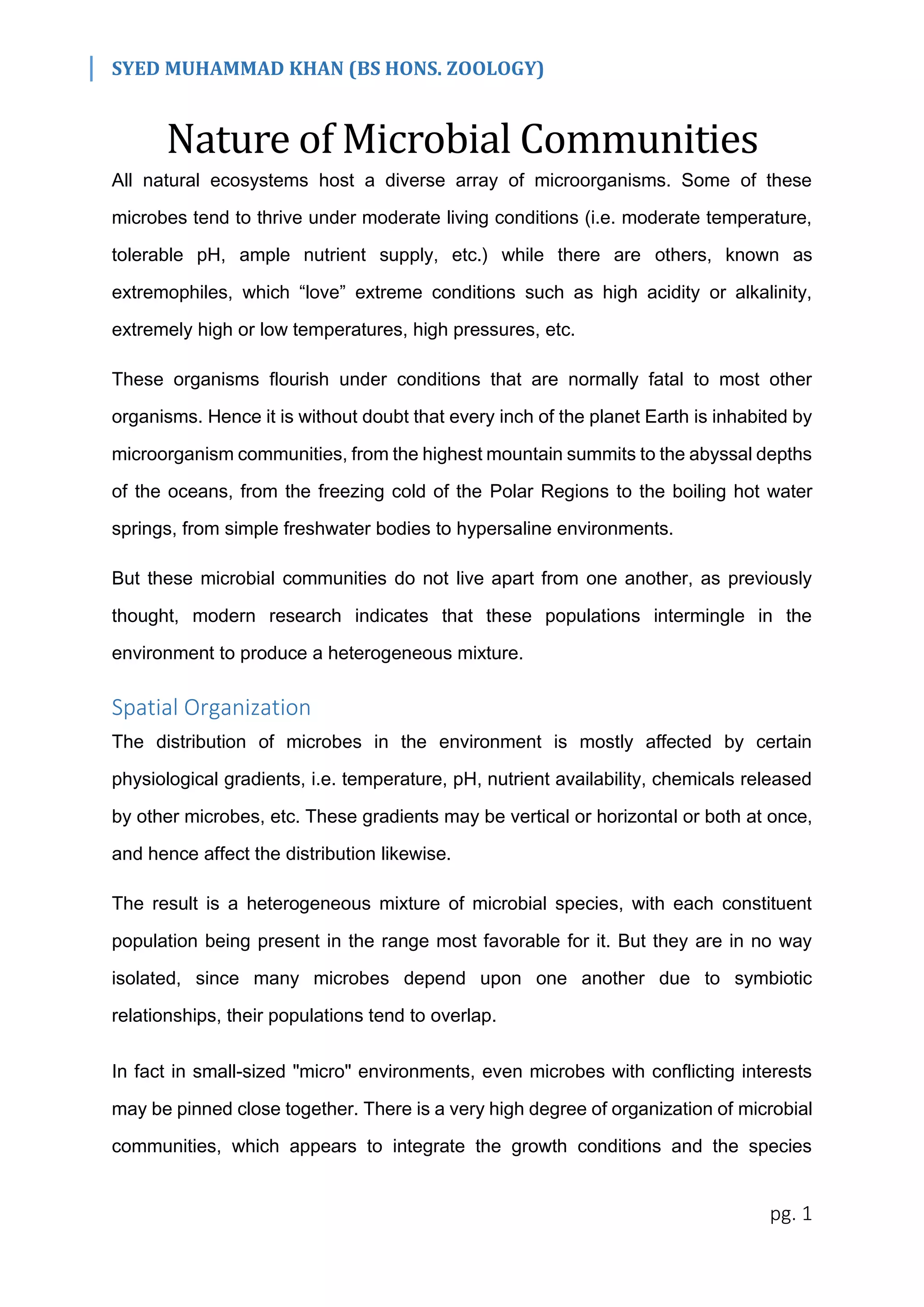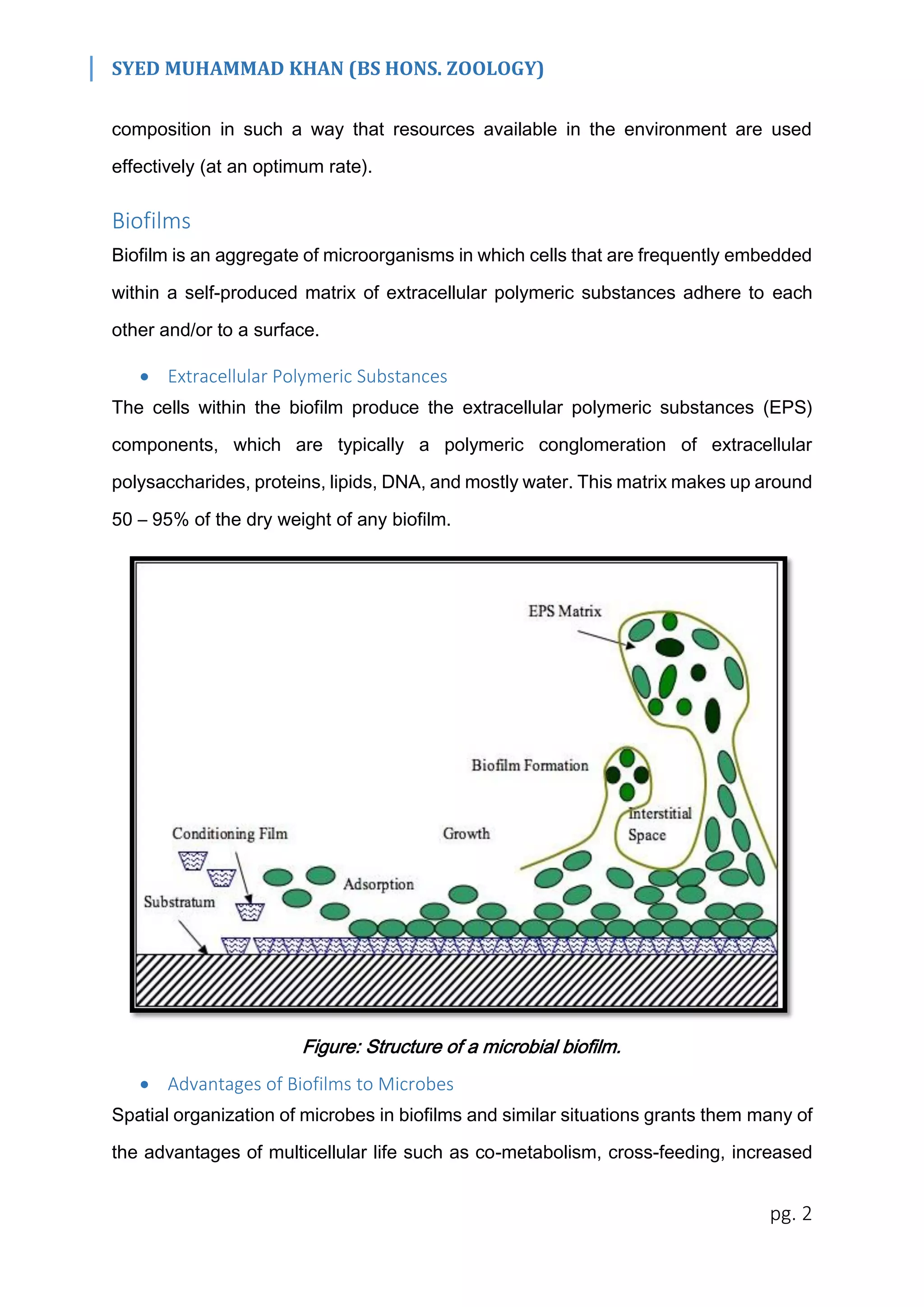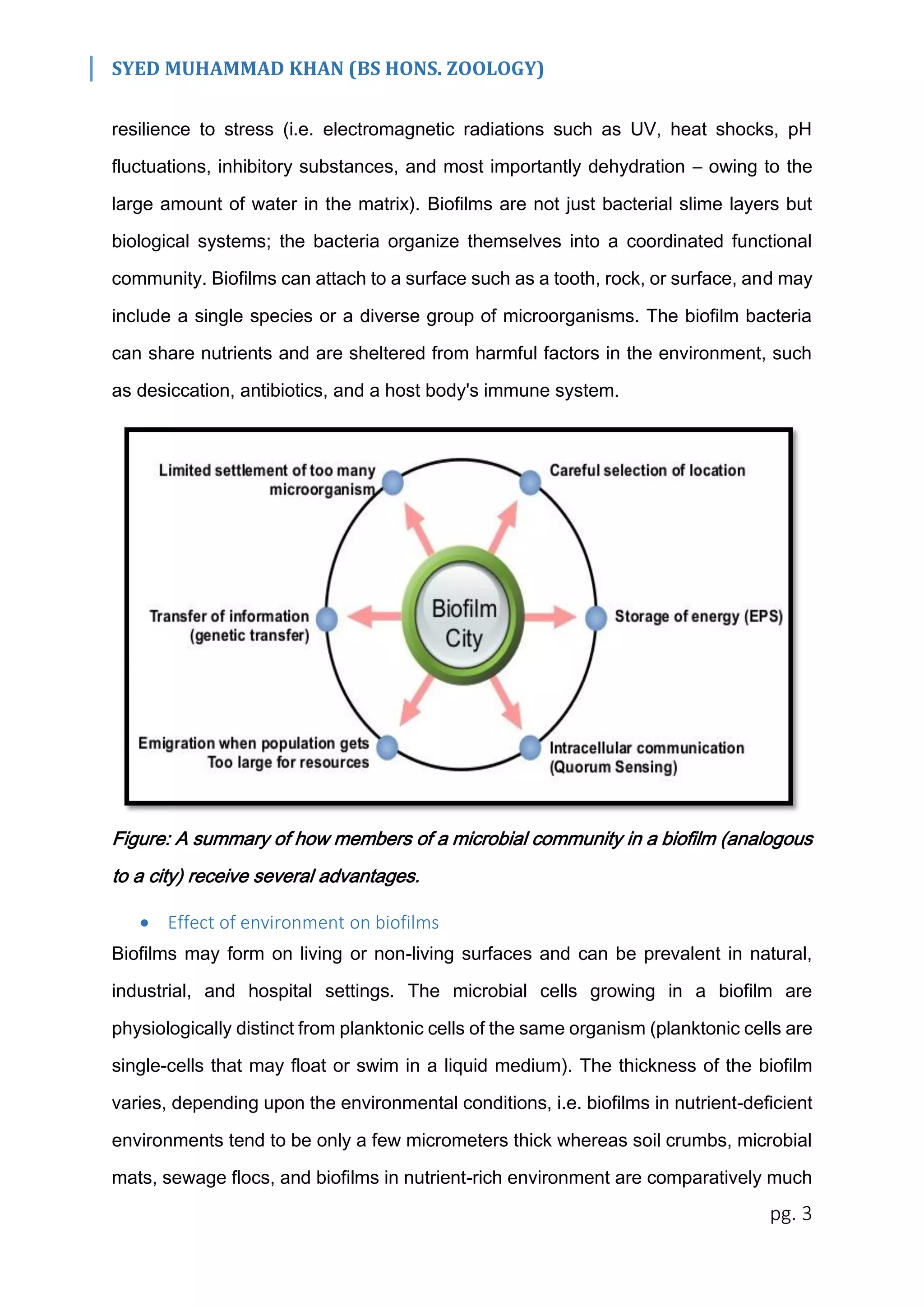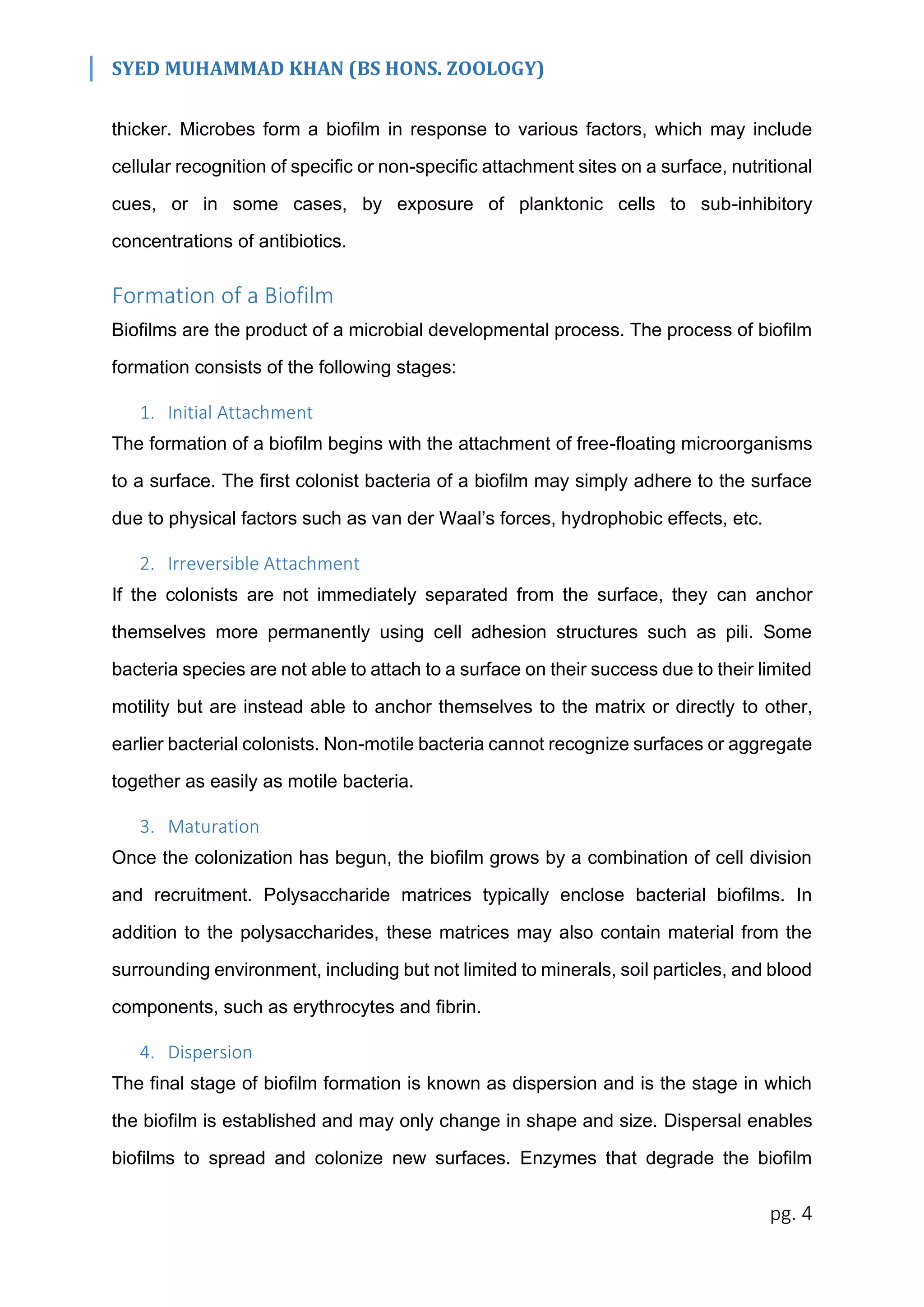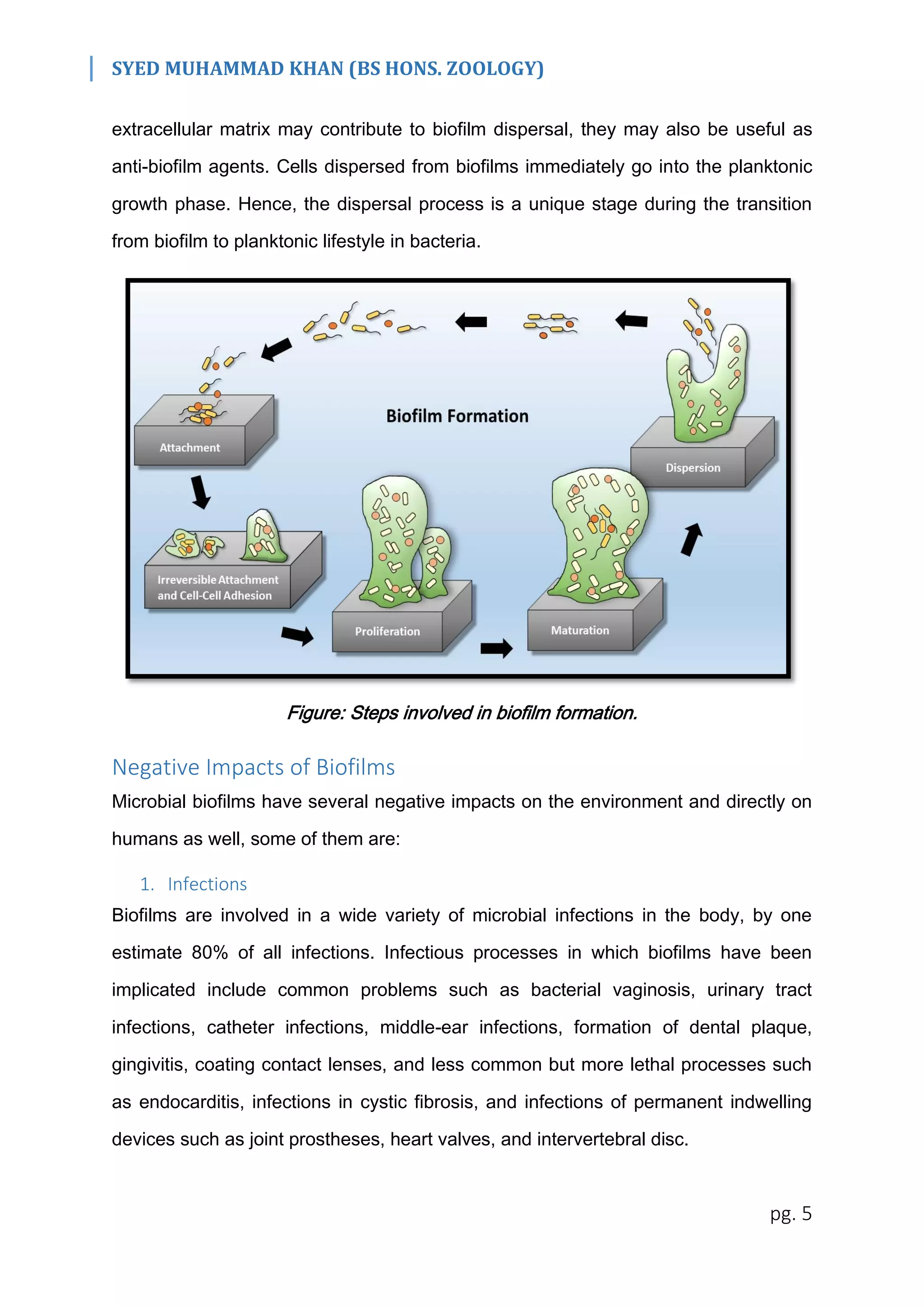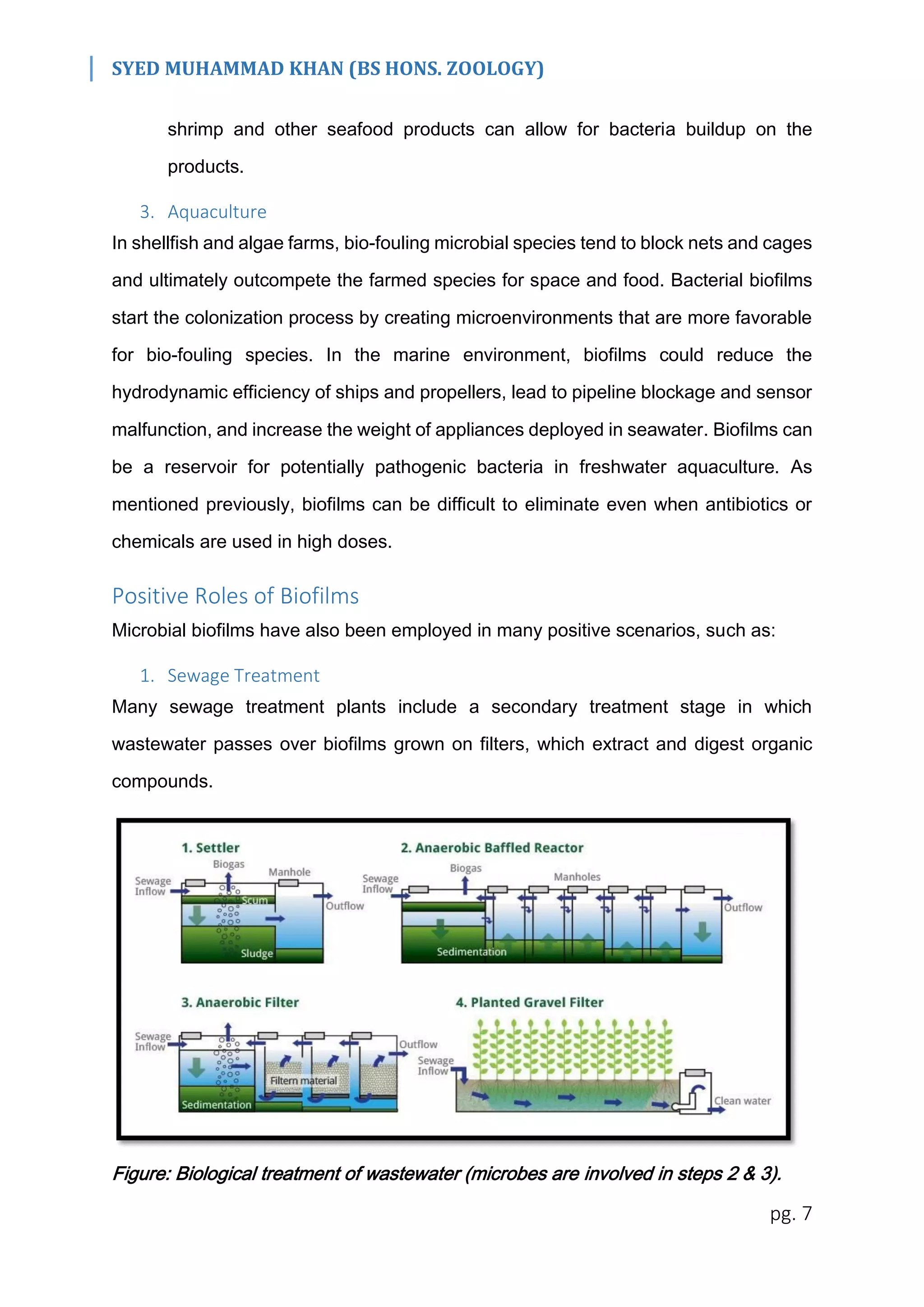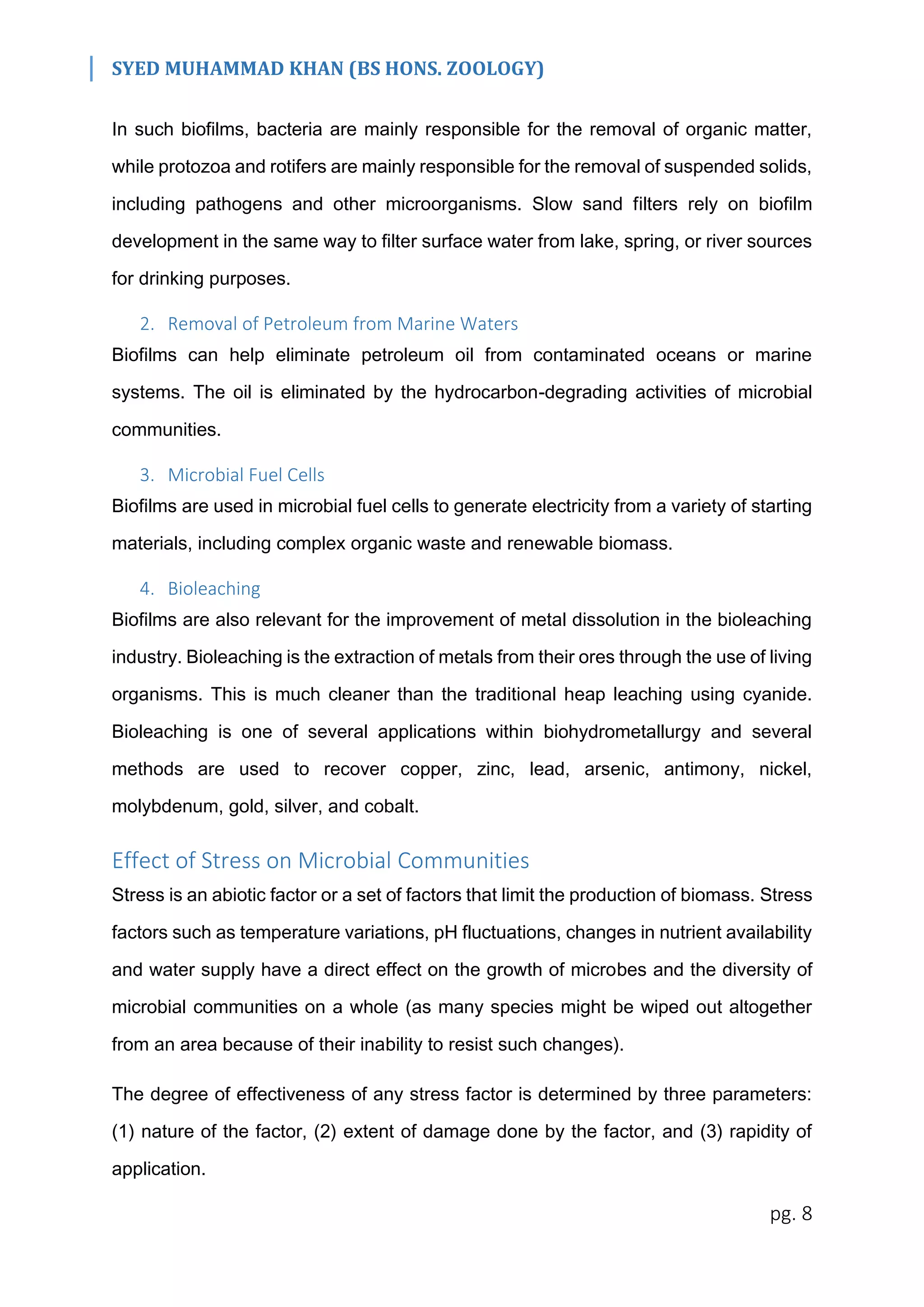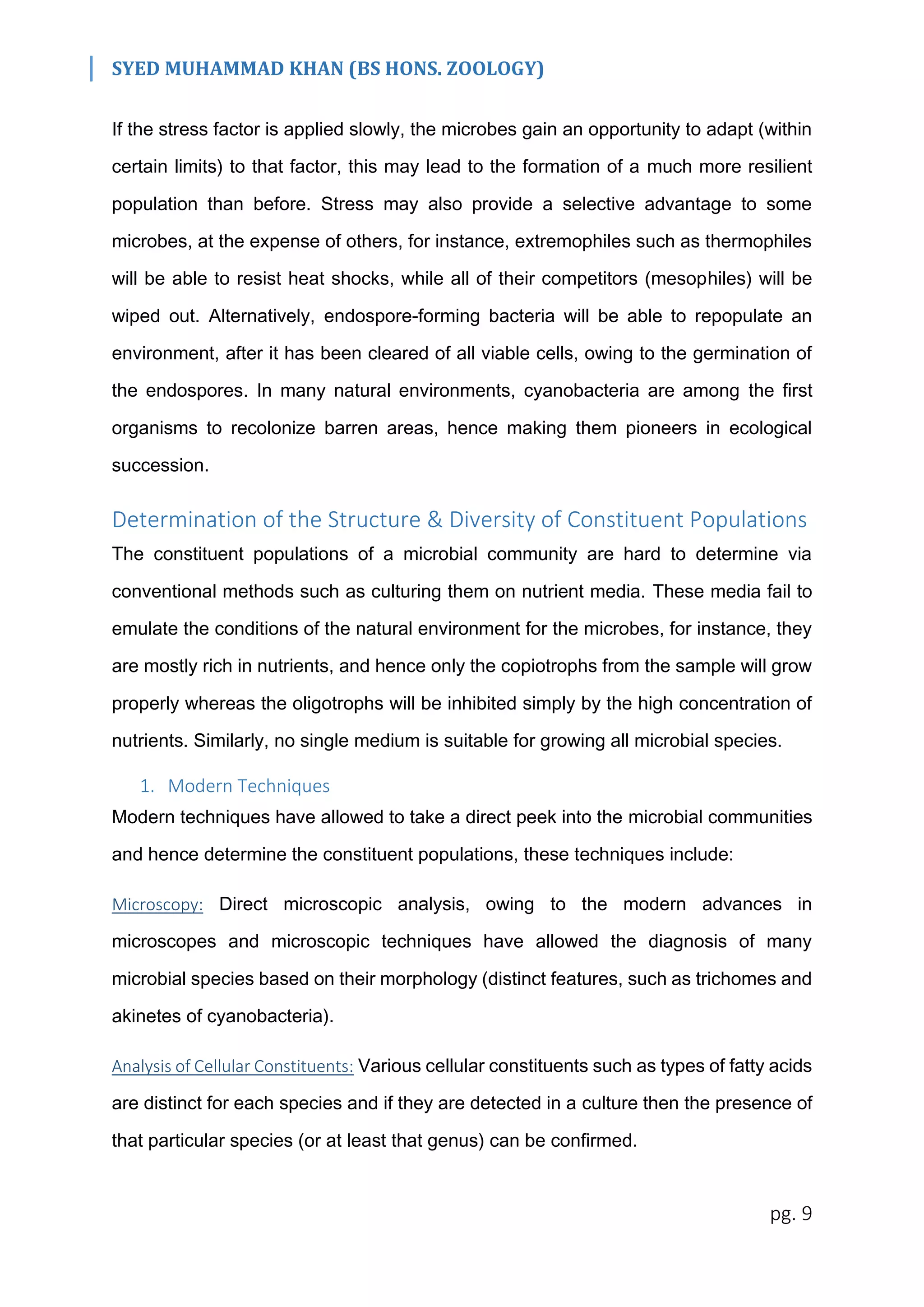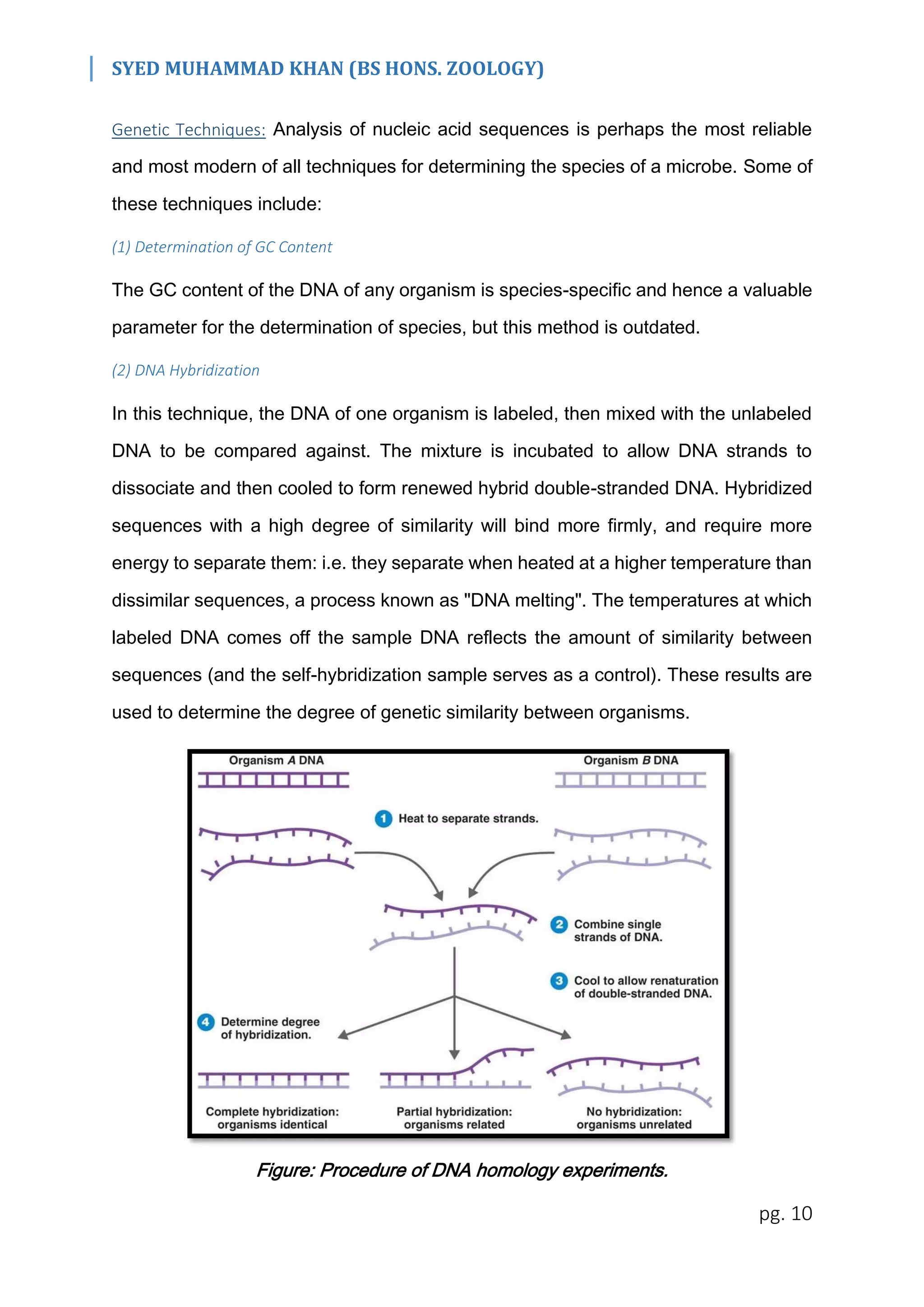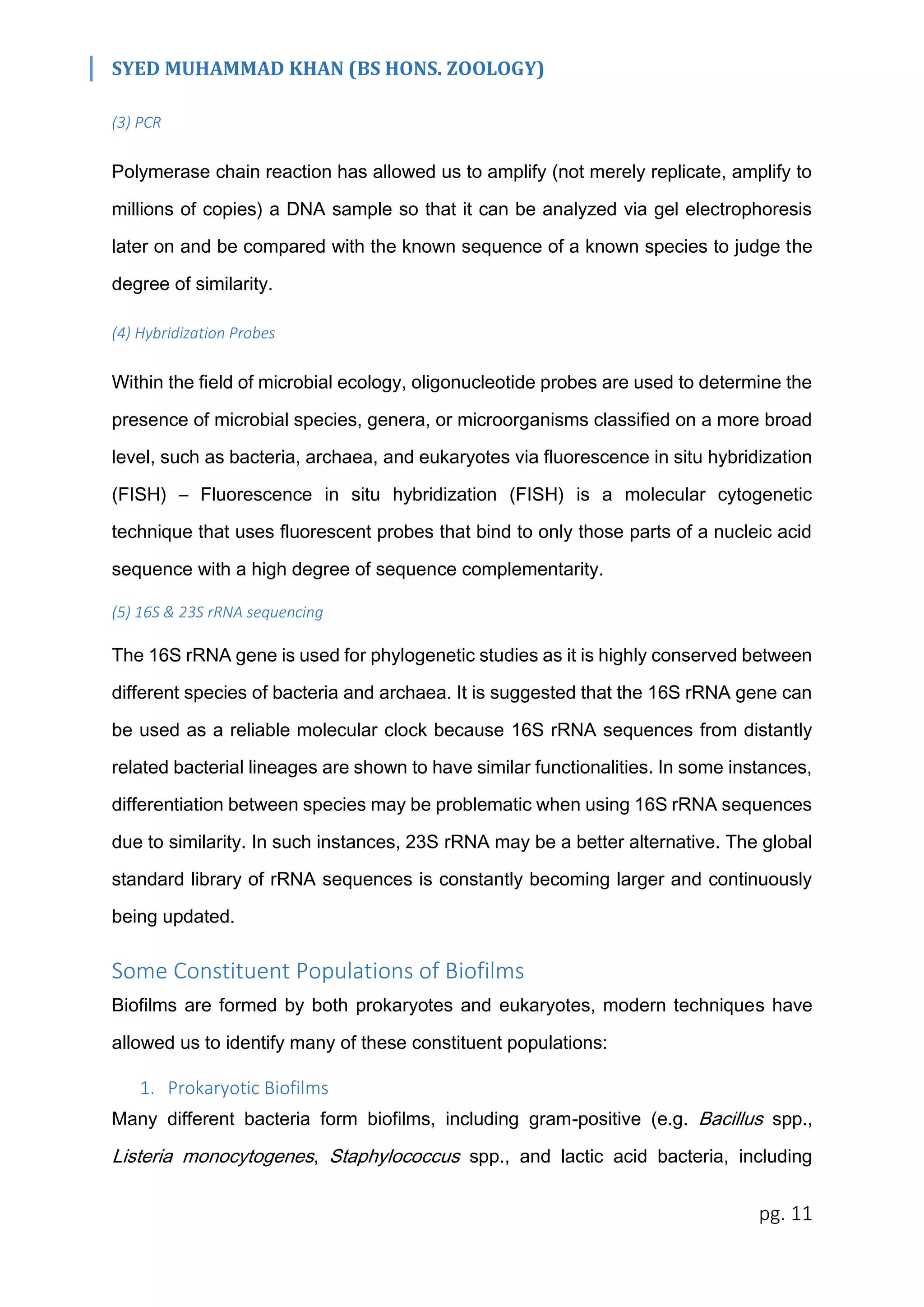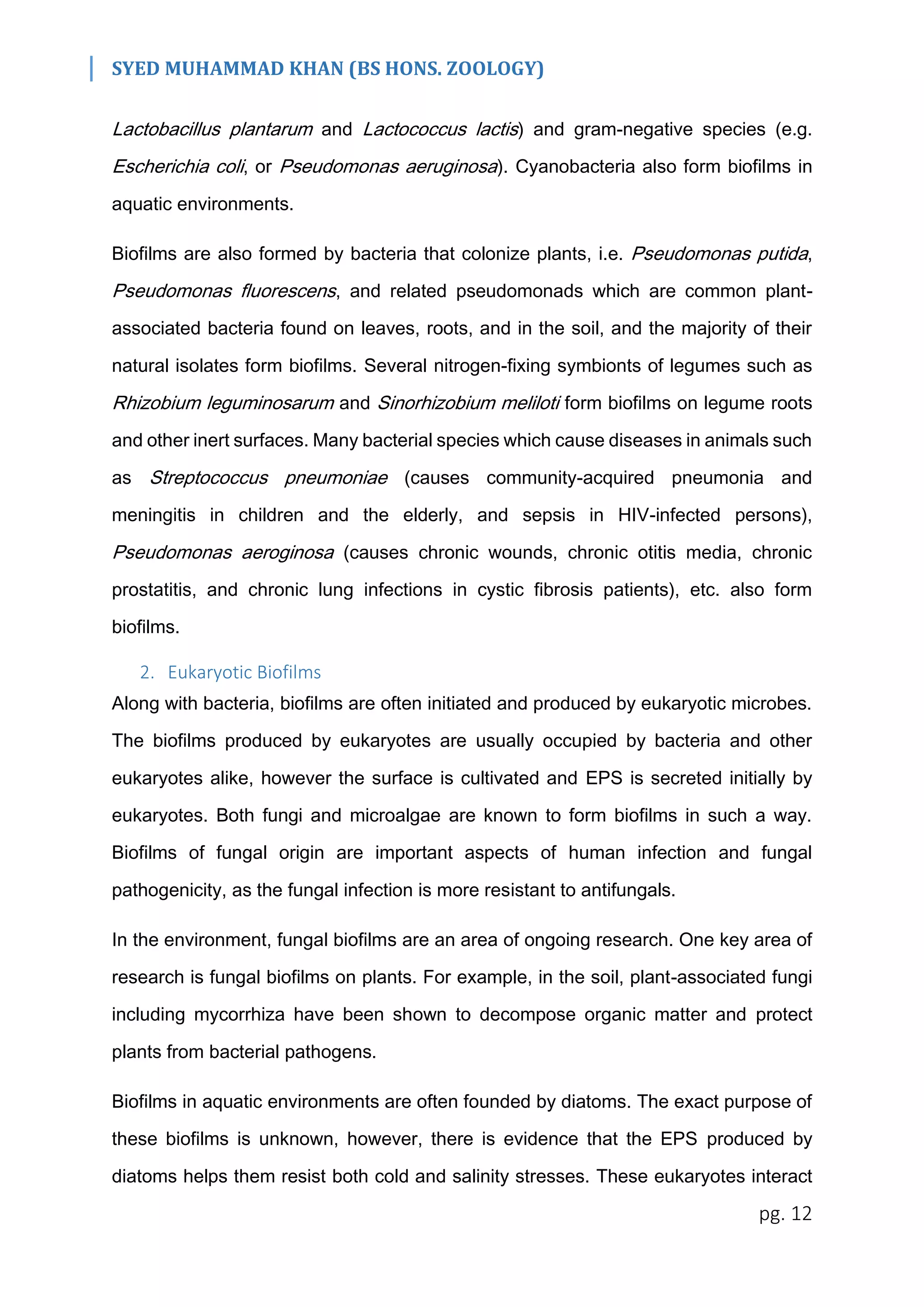This document discusses microbial communities and biofilms. It begins by explaining that microbes thrive in diverse ecosystems under a range of conditions. Microbial communities are heterogeneous mixtures that interact. Biofilms provide advantages like nutrient sharing and protection. The document then discusses techniques to analyze microbial communities, including genetic methods. It covers positive and negative impacts of biofilms in areas like infections, food production, and wastewater treatment. Stress can impact microbial diversity by selecting certain organisms. Modern techniques allow direct analysis of constituent populations in communities.
